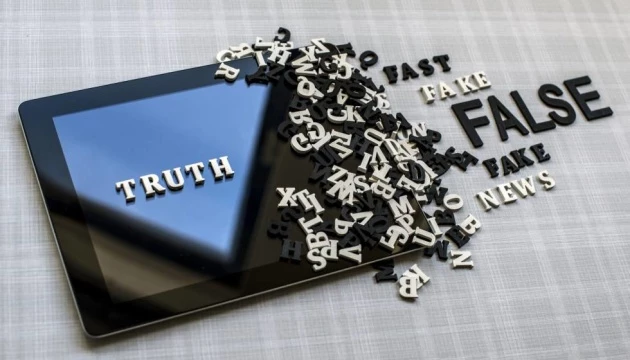Українською читайте тут.
From time to time, media and expert circles in Ukraine spark debates about the relevance of tools used to counter hybrid threats. At the heart of these discussions is traditionally media and information literacy—its applicability to the current Ukrainian context, especially under the severe resource constraints imposed by war. This article explores media and information literacy specifically through the lens of wartime realities and examines how its tools contribute to building a common foundation for national security.
Security theory outlines two key concepts: deterrence and resilience.
Deterrence focuses on the adversary: the goal is to influence their decision-making by making the cost of aggression unacceptably high or the chances of success too low. It can involve demonstrations of force, capability, and readiness to respond effectively. Resilience, on the other hand, centers on internal capacity—it’s about strengthening internal systems, reducing vulnerabilities, and ensuring continuity in the face of threats.
Resilience not only prevents attacks but enables a society to withstand, repel, and recover from them as quickly as possible. Both strategies are essential in security, whether in national defense, cybersecurity, or organizational risk management.
In the digital age, war as a means of achieving political goals has long transcended conventional battlefield tactics. The human mind has become a new battlefield, alongside land, sea, and air. NATO recognizes cognitive warfare as a distinct dimension of modern conflict. In this context, it becomes entirely logical to apply approaches of deterrence and resilience not just to physical or cyber threats, but also to the information and cognitive domains.
Since the beginning of Russia’s full-scale invasion, Ukraine has been employing a broad array of tools—both deterrence-focused (such as blocking malicious media outlets, conducting information operations in occupied territories and Russia, cyberattacks, etc.) and resilience-building ones.
However, the emphasis remains largely on deterrence, while efforts to build internal resilience still require substantial, systematic strengthening. Without equal development of both components—and balance between them—full-scale protection is impossible.
What is Resilience—and How Does It Work on the Societal Level?
When scholars define resilience as a security category, they emphasize its societal dimension—one that includes the public alongside state institutions. This trend has intensified with the accession of Sweden and Finland to NATO, both of which developed during the Cold War a whole-of-society approach to security in response to threats from the Soviet Union. This approach pays particular attention to psychological and cognitive security and resilience.
Sweden has an independent government body—the Psychological Defence Agency (Myndigheten för Psykologiskt Försvar, MPF)—whose mission is to "strengthen the population’s ability to identify disinformation and harmful influence campaigns, and to resist them by building resilience and capacity to defend the country."
Finland—consistently ranked as the most resilient country in the world to harmful information influences—has enshrined in law a comprehensive security model, based on cooperation between the state, business, and civil society to ensure the continuity of vital societal functions. Media literacy and critical thinking are integrated into all levels of education.
Cognitive Warfare: A New Framework for Media Literacy
As mentioned earlier, attention to media literacy as a component of national security has grown steadily in recent years, both within NATO as an alliance and among individual member states.
NATO defines cognitive warfare as “activities conducted in combination with other instruments to influence the attitudes and behavior of target audiences by manipulating, protecting, and/or degrading individual and group judgment in order to gain an advantage over an adversary.” The concept explicitly acknowledges the cultural and emotional dimensions of human decision-making—suggesting that by focusing solely on disinformation and fake news, we ignore a broad spectrum of strategies that can be employed in the media and information space.
NATO has identified eight key resilience domains to be built and secured by 2030.
As the Alliance elaborates on these priorities in its strategic documents, it frames media literacy as a core element of long-term efforts to foster internal, societal, and democratic resilience—in both partner and member states.
Not only do all NATO personnel undergo mandatory media literacy training, but NATO experts also provide specialized media literacy instruction for the armed forces of partner countries, tailored to military needs. A constant and active exchange of knowledge continues with academic institutions, NGOs, and practitioners promoting media literacy at various levels and among diverse audiences.
UNESCO, for its part, names media literacy as one of the most essential skills of the 21st century, necessary for all age groups to engage with the world consciously and responsibly:
- Children preparing to enter adulthood;
- Teenagers actively consuming and producing media content;
- Adults shaping and driving public discourse;
- And older people aged 65+, who, according to the WHO, will soon comprise 27% of Europe’s population.
At the same time, despite growing interest in the topic, challenges remain—particularly the lack of a universally accepted definition of media literacy, as well as of the concepts of "information warfare" or "cognitive warfare." This creates confusion and fosters skepticism, especially among scholars and practitioners with more traditional perspectives who are reluctant to treat information and cognitive threats as distinct fields.
The Council of Europe defines media and information literacy as “the ability to develop cognitive, technical, and social skills that allow individuals to access media content, analyze it critically, make informed decisions about which media to use and how, understand the ethical implications of media and technology, and communicate effectively and ethically, including through content creation.”
The Ukrainian Context: From Fake News to Emotional Intelligence
In Ukraine, media literacy is sometimes mistakenly narrowed to news literacy. In reality, the competency framework of media literacy is much broader. It includes skills not only for detecting fake news but also equips individuals with emotional intelligence and healthy dialogue practices.
(infographics by Zinc Network)
Some researchers highlight the importance of media and information literacy skills in discussions around identity and state-building. Citizens with these skills are more capable of participating constructively in public life—and engaging in societal conversations about identity, memory, history, and cultural diversity. This is critically important for Ukraine, given the identity-related challenges posed by war.
Ukraine’s public agenda is saturated with highly sensitive topics—potential elections, mobilization, peace negotiations, integration of diverse social groups, and debates about the state’s future trajectory. All of this creates an ideal environment for information attacks aimed at division and demoralization.
This strategy is not new. But the heightened emotional intensity of the current context, combined with multifaceted risks, takes it to a new level. Curbing it through internal interventions—such as tighter regulation—may seem logical and effective. But the best path for a democratic state lies in long-term investment in the resilience of both its institutions and its citizens.
This means strengthening institutions and citizens—through education, skills development, critical thinking, and shared responsibility for the information space.



